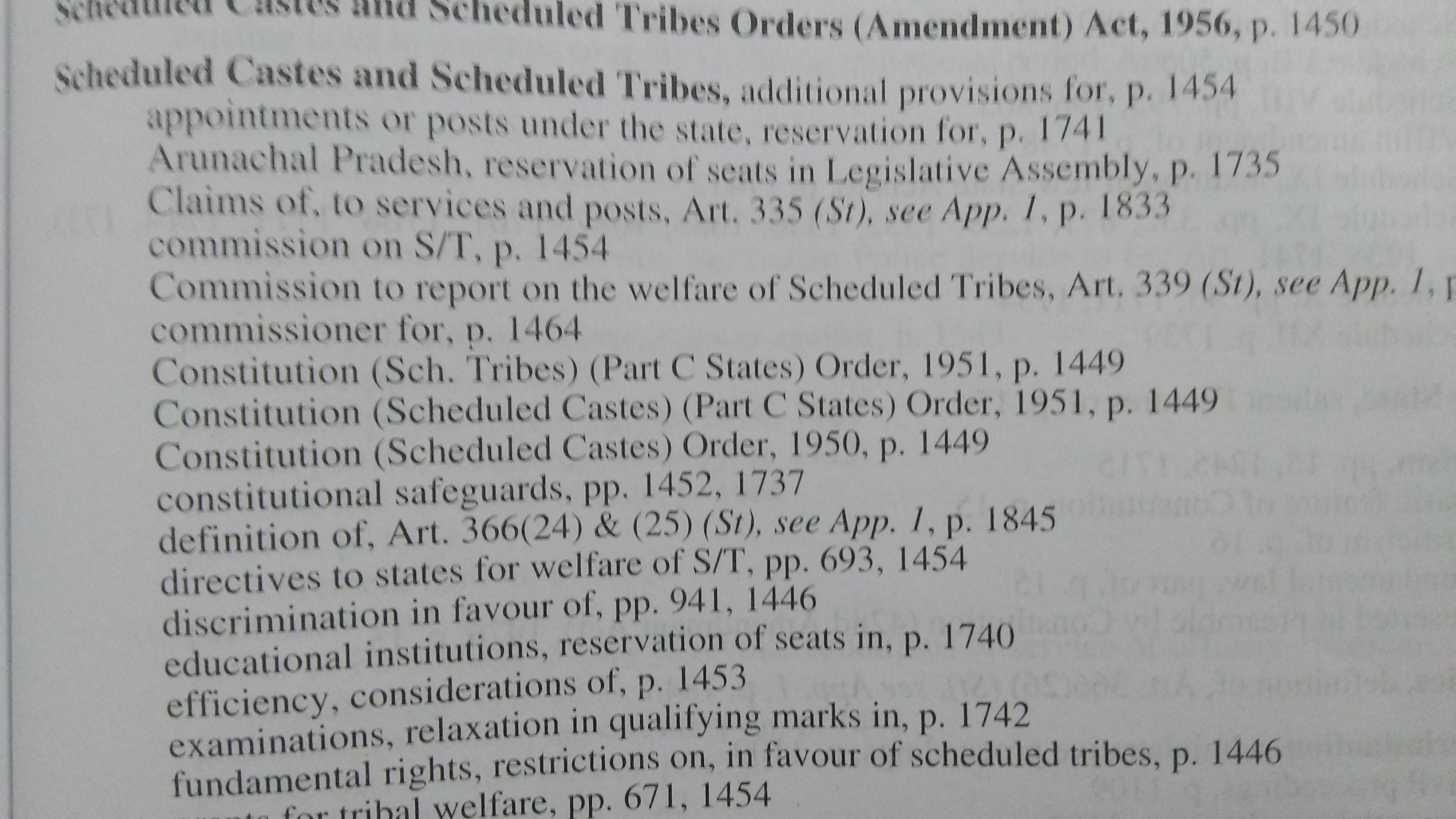Good Morning Friends,
We are Posting Today’s Prelims Marathon
About Prelims Marathon – In this initiative, we post 10 high-quality MCQs daily. Questions are based on the static part of the syllabus. We at ForumIAS believe that practicing these quality questions on a daily basis can boost students’ prelims preparation.
For the weekly time table and archives click HERE
[WpProQuiz 1733]







RESULTS
5 of 10 questions answered correctly
Your time: 00:03:35
Solution to Question 8 is wrong.
The Question asks which of the classes are defined under Constitution.
Yes, the list of SC/ST is not part of the Constitution but the classes have been defined in the Constitution in Article 341 and 342 read with Article 366.
check the Kaka kalelkar commission and Lokur commission.
I am attaching a longer articulation of why it can be said that the terms SC/ST are defined under the constitution . For other candidates.
Short Answer- Hopefully this should end any debate-
From the Official Site of the Department of Personnel-
Quote- Articles 341 and 342 of the Constitution of India define as to who would be Scheduled
Castes and Scheduled Tribes with respect to any State or Union Territory. The relevant Constitutional articles are quoted below :
Source- https://dopt.gov.in/sites/default/files/ch-11.pdf
Long Answer-
Title of Article 366- Definition In this Constitution, unless the context otherwise requires, the following expressions have l, the meanings hereby respectively assigned to them, that is to say
(24) Scheduled Castes means such cases, races or tribes or parts of or groups within such castes, races or tribes as are deemed under Article 341 to be Scheduled Castes for the purposes of this Constitution;
(25) Scheduled Tribes means such tribes or tribal communities or parts of or groups within such tribes or tribal communities as are deemed under Article 342 to be Scheduled Tribes for the purposes of this Constitution;
If you read Article 341/342 it basically states that the detailed list of which castes/tribes are SC/STs will be issued by the President.
To summarize- the definition clause of the constitution clearly defines the meaning of the terms Scheduled Caste/Scheduled Tribe.
What you’ve quoted is correct but you only copy pasted it without understanding it .. the dopt document says constitution defines who “would be” and not who “is”…this it has left to president,
For example just a hypothetical situation, tomorrow parliament may change the conditions and it is very much possible few tribes are left out, but the constitution statement will not change as it defines only who “would be” and that “would be” will be determined by president and edited by parliament.
Rest, you are free to assume what is correct and go ahead with it, I too had same doubt but got it clarified by Sarmad sir, so I tried to explain to you…
At the end what you mark is your responsibility. All the best
Additional Source- From MP Jain’s Constitutional law book- which the Supreme Court has relied on for clarification in its judgments.

The definition of the term SC/ST is- those communities which are identified in the list initially issued by the President and then amended by the Parliament from time to time.
The names of the specific communities are to be found in the Schedules which will be changed from time to time but the definition will always be the one given in the constitution.
6/10
RESULTS
6 of 10 questions answered correctly
Your time: 00:04:01
You have reached 6 of 10 scores, (60%)
Q8 ST are also defined in article 366(25)
6/10
6/10
7/10.
You have reached 5 of 10 scores, (50%)
8 of 10 questions answered correctly
Your time: 00:03:52
RESULTS
7 of 10 questions answered correctly
Your time: 00:03:48
9/10
Daily Quiz: September 2, 2020
RESULTS
6 of 10 questions answered correctly
Your time: 00:04:30
You have reached 6 of 10 scores, (60%)
Average score 45.01%
Your score 60%
RESULTS
8 of 10 questions answered correctly
Your time: 00:04:09
9/10
5/10
8/10
7/10
7/10
8/10..q7,8
6 of 10 questions answered correctly
Your time: 00:04:56
You have reached 6 of 10 scores, (60%)
You have reached 9 of 10 scores, (90%)